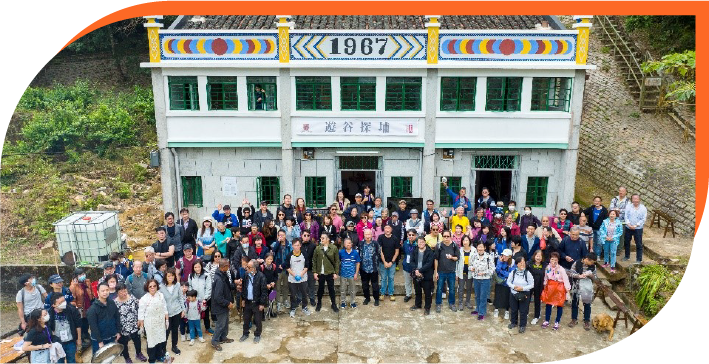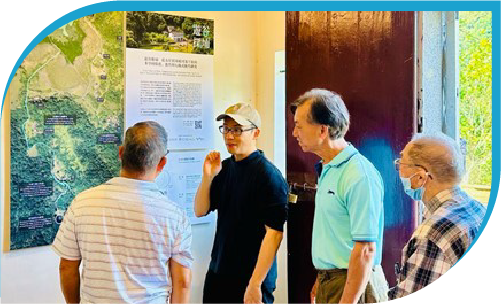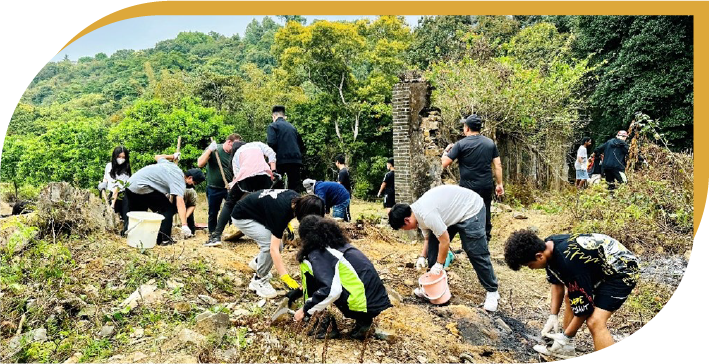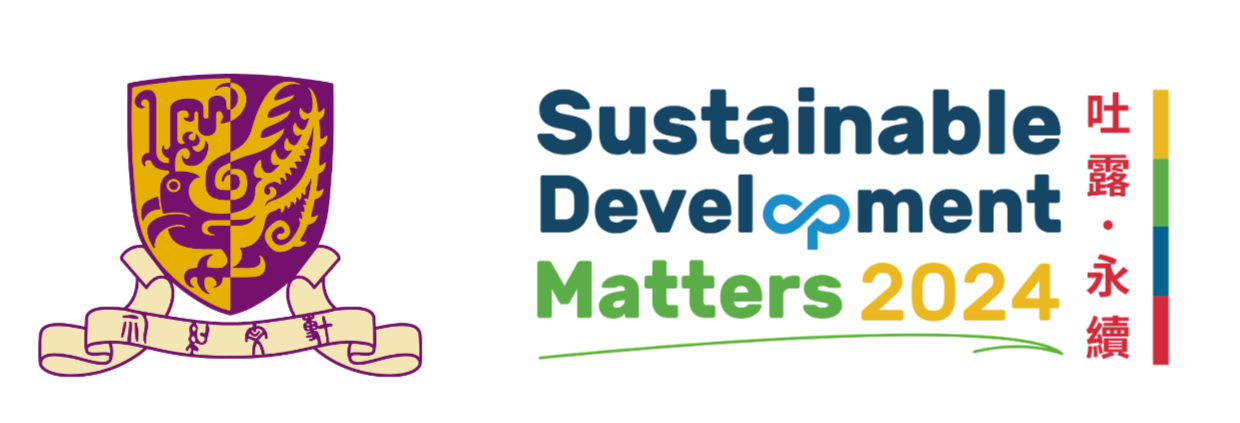Photo courtesy of interviewees

Like most architects, the associate professor of the School of Architecture has a great fondness for drawing and model-making. It is this discipline, essentially a spatial way of thinking about the world, that connects him to the world. What endows his life with a sense of rebirth and concrete authenticity, however, is the hermit realms of the local countryside. At the start of his academic journey in 2006, for teaching’s sake, Professor Chung focused on old districts like Sai Ying Pun, Central and Sheung Wan, and Shau Kei Wan. Starting in 2014, to give students a better grasp of principles of architectural design and the relationship between architecture, people and land, he visited Sai Kung, Tai Po and Cheung Chau. In 2019, he ventured into the rural villages in the more remote areas of Hong Kong. By then, the North East New Territories New Development Areas project had started, and the Countryside Conservation Office under the Environment and Ecology Bureau was inviting applications for countryside conservation initiatives. ‘Apart from environment and ecology, the Office’s funding schemes cover rural villages. So there will be architecture, heritage, and culture.’ The local tourism boom since the pandemic and the villagers’ resolve to revive their homes connect Professor Chung with remote villages.
Towards the end of 2019, Professor Chung was introduced by a friend to Mui Tsz Lam village representative Tsang Yuk-On, who had been canvassing different parties to revitalise the village. Flanked by terraced fields, fung shui woods and a river, the Hakka village in Sha Tau Kok was still inhabited in the 1960s and 1970s. By the time Professor Chung visited the village, however, the once flourishing settlement had been reduced to ruins and was buried by woods. To bring the 360-year-old village back to life, he went there on foot to clear the debris. When summer came, he brought students participating in the I·CARE programme to Mui Tsz Lam to help with the restoration. After discussion with villagers, Professor Chung and the team decided to apply for grants. In October 2020, Professor Chung began to work with architecture undergraduate and graduate students to restore the Old House and Mural House in Mui Tsz Lam under Project Plum Grove.


The restoration of Mui Tsz Lam has resonated far and wide. Several non-governmental organizations and universities have started natural and cultural heritage conservation projects there. After it took centre stage as the setting for Far Far Away, a local romantic comedy blockbuster, the village in Hong Kong’s remote northeastern corner attracted widespread public attention.


Revolving around individual houses, the Kuk Po restoration witnesses a stronger bond between the team and the villagers. Returning to Hong Kong from England, Mr Yeung, Yeung House’ s owner and a chef himself, occasionally treated the team traditional Hakka dishes. As smoke curled up in front of the house, the long-vanished delicacies were again seeing the light of day, filling stomachs and warming hearts. The renovation of Yeung House was completed early this year. The team moved on to revitalize the Lee House in Tin Sumi, setting the target of making it more eco-friendly and low carbon.

In March 2023, the team hosted a learning week for high schoolers from ECLHK Lutheran Academy. The students carried out a field study in Ng To, Kuk Po, to learn more about its history, geography, ecology and cultural heritage. The picture shows students from ECLHK Lutheran Academy excavating and clearing the site of a village house. An old television set and a steel pig cage have been retrieved
By venturing into Hong Kong’ s remote villages, Professor Chung and fellow countryside lovers have found a sense of tranquility and peace.
Note: The two design research projects “Project Plum Grove” in Mui Tsz Lam and “From Valley to Plain” in Kuk Po were funded by the Countryside Conservation Funding Scheme (CCFS) under the Countryside Conservation Office (CCO).
Amy Li is an editor in the Communications and Public Relations Office, The Chinese University of Hong Kong.
